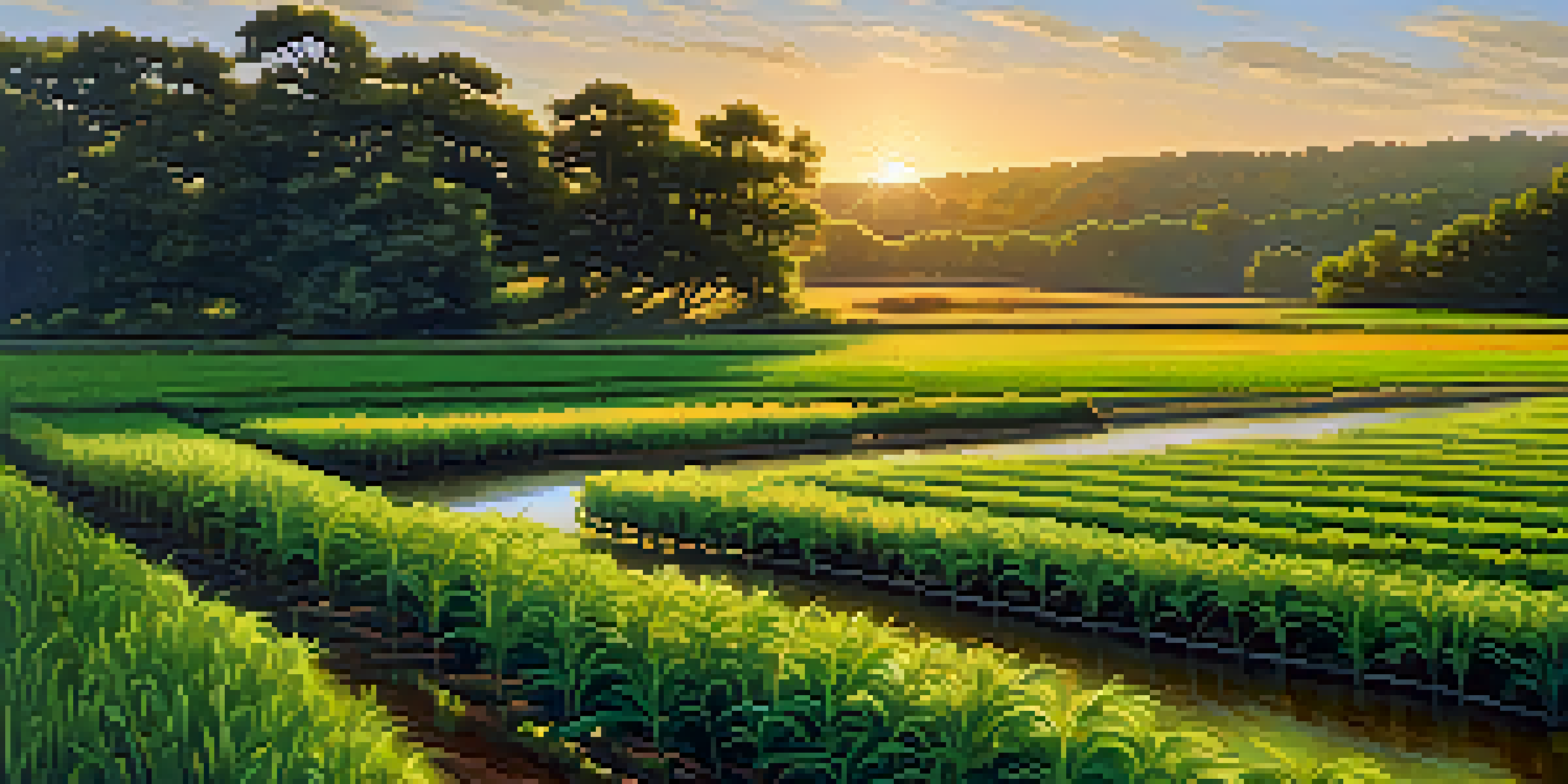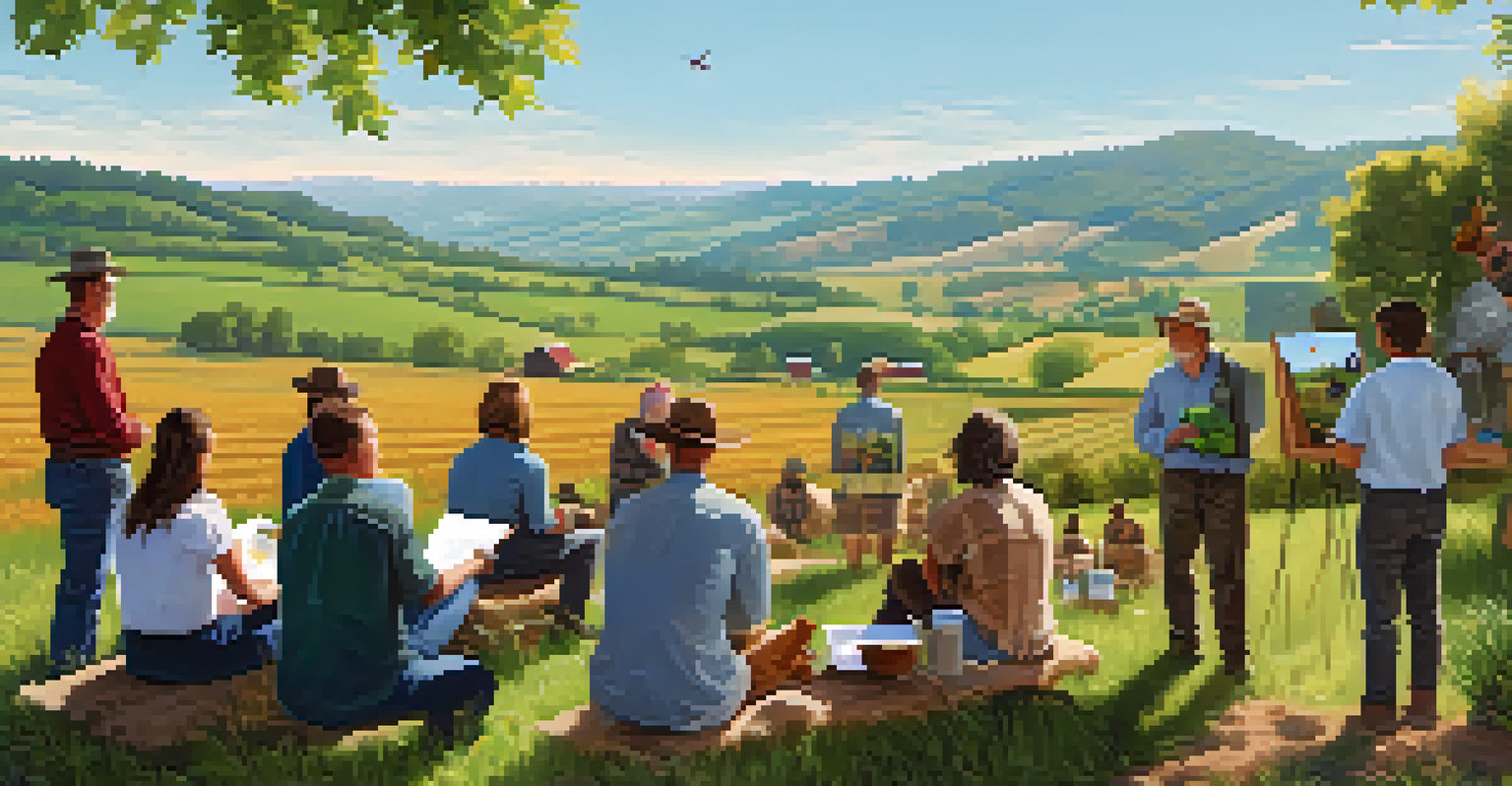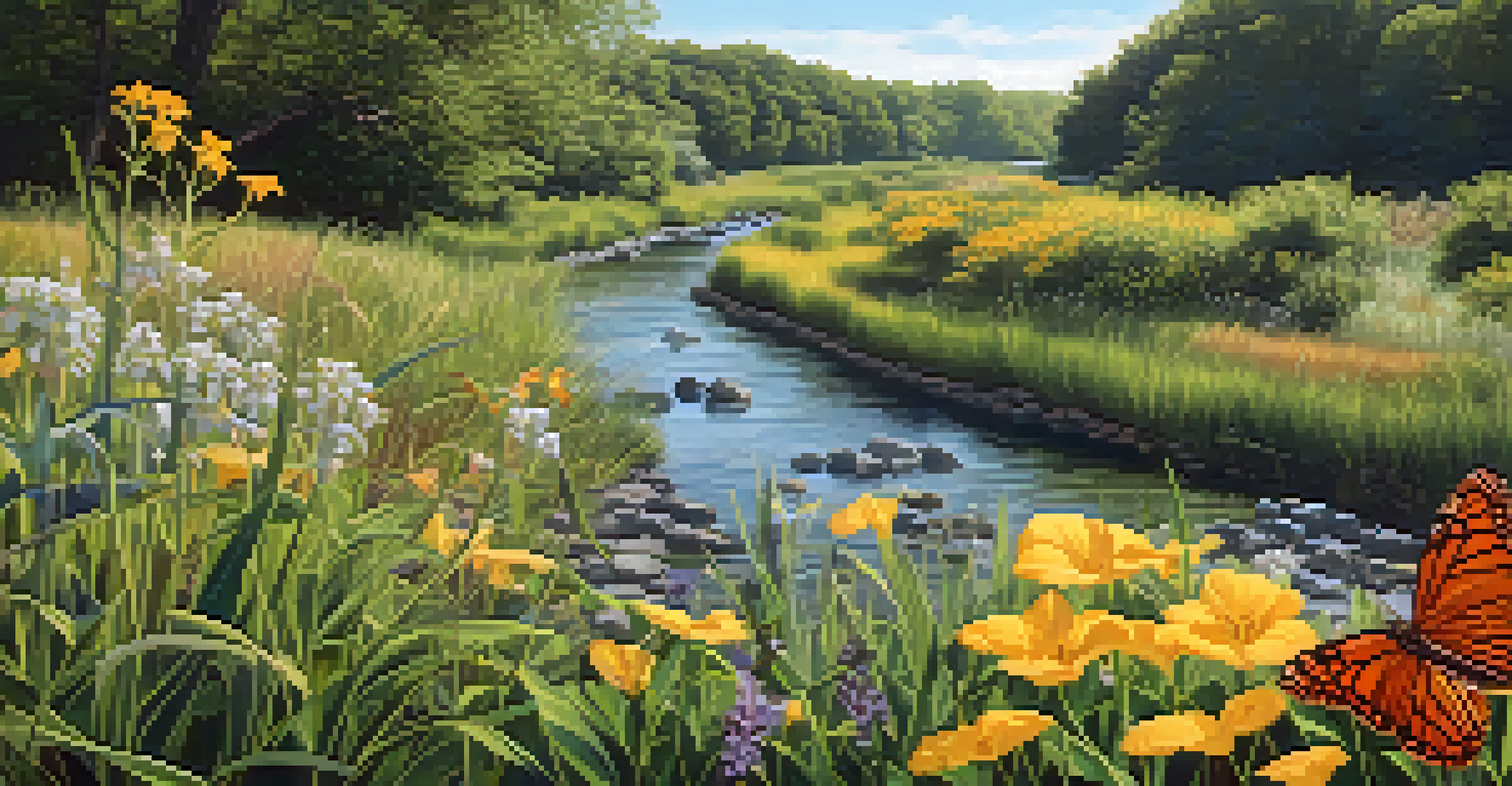The Impact of Agriculture on Wildlife Conservation in Georgia

Understanding the Relationship Between Agriculture and Wildlife
Agriculture and wildlife often exist in a delicate balance, especially in regions like Georgia. While farming provides essential food resources, it can also disrupt natural habitats. This interconnection raises questions about how agricultural practices impact local wildlife populations. Understanding this relationship is crucial for developing strategies that benefit both farmers and conservationists.
The land is not a mere resource; it is a living community that we are a part of.
In Georgia, various farming activities can lead to habitat loss and fragmentation. For instance, the conversion of wetlands into cropland can threaten species that rely on these ecosystems. However, agriculture can also create new habitats, particularly when farmers implement conservation-friendly practices. This duality highlights the need for thoughtful approaches to farming that consider wildlife conservation.
Ultimately, recognizing this relationship allows us to explore ways agriculture can be a force for good. By implementing sustainable practices, farmers can support biodiversity while also maintaining productive lands. This synergy is not only beneficial for wildlife but can also enhance the resilience of agricultural systems.
The Role of Sustainable Farming Practices
Sustainable farming practices play a vital role in mitigating negative impacts on wildlife. Techniques such as crop rotation, cover cropping, and reduced pesticide use can enhance soil health while protecting local ecosystems. These methods not only preserve biodiversity but also improve agricultural productivity in the long run. For example, planting native vegetation alongside crops can provide habitat for pollinators and other beneficial species.

Moreover, sustainable practices can help farmers adapt to climate change, which poses a significant threat to wildlife. By improving soil quality and water retention, these methods can create more resilient agricultural landscapes. This resilience is essential not just for crops but also for the wildlife that depends on these environments for survival.
Sustainable Farming Benefits Wildlife
Implementing sustainable practices can enhance biodiversity while improving agricultural productivity.
In Georgia, many farmers are beginning to recognize the benefits of sustainable agriculture. Initiatives that promote organic farming and agroforestry are gaining traction, demonstrating that economic viability and wildlife conservation can coexist. This shift toward sustainability is a promising development for both agriculture and wildlife conservation.
The Importance of Riparian Zones for Wildlife
Riparian zones, or the areas adjacent to rivers and streams, are crucial for wildlife conservation in agricultural landscapes. These zones serve as buffer strips that filter pollutants from agricultural runoff, protecting aquatic ecosystems. They also provide essential habitats for numerous species, including birds, amphibians, and insects. Maintaining healthy riparian zones can significantly enhance biodiversity in farming areas.
Conservation is a state of harmony between men and land.
Farmers can play a pivotal role in preserving these vital ecosystems through practices like planting native vegetation along waterways. These plants not only stabilize banks but also create corridors for wildlife movement. When farmers recognize the value of these areas, they contribute to a healthier environment that supports both agriculture and wildlife.
Additionally, integrating riparian buffer strips into farm management can lead to improved water quality and reduced erosion. This ultimately benefits farmers by ensuring sustainable water sources for irrigation. The win-win scenario highlights how thoughtful agricultural practices can enhance wildlife conservation efforts.
The Impact of Pesticides on Wildlife Populations
Pesticides, while effective for crop protection, pose significant risks to wildlife populations. Chemicals used in agriculture can contaminate soil, water, and air, leading to harmful effects on non-target species. For example, pollinators like bees and butterflies can suffer from pesticide exposure, which in turn impacts agricultural productivity. Understanding these consequences is essential for balancing farming needs with wildlife protection.
To mitigate the adverse effects of pesticides, many farmers are adopting integrated pest management (IPM) strategies. IPM emphasizes the use of biological controls and minimizes chemical use, which can lead to healthier ecosystems. By reducing reliance on harmful pesticides, farmers can help protect local wildlife and promote biodiversity on their lands.
Education Drives Conservation Efforts
Raising awareness about the impacts of farming practices empowers farmers to adopt wildlife-friendly methods.
Moreover, educating farmers about the impacts of pesticide use is crucial for fostering a conservation mindset. Workshops and resources can provide insights into safer alternatives and practices that benefit both crops and wildlife. This shift in perspective can ultimately lead to a more harmonious coexistence between agriculture and nature.
Conservation Programs and Agricultural Partnerships
Collaborative efforts between conservation organizations and farmers are essential for effective wildlife protection. Programs that incentivize environmentally friendly practices can encourage farmers to adopt methods that benefit both their crops and local wildlife. For instance, initiatives like the Conservation Reserve Program offer financial incentives for landowners to set aside portions of their land for conservation purposes.
In Georgia, partnerships between agricultural groups and environmental organizations are becoming increasingly common. These collaborations focus on educating farmers about the importance of wildlife conservation and providing resources to implement sustainable practices. Such joint efforts can lead to significant improvements in habitat quality and biodiversity.
These partnerships not only benefit wildlife but also promote community engagement and awareness. When farmers see the value in protecting their local ecosystems, it fosters a sense of stewardship that can have lasting effects on the landscape. Together, agriculture and conservation can create a brighter future for Georgia's wildlife.
The Role of Education in Promoting Conservation
Education plays a crucial role in bridging the gap between agriculture and wildlife conservation. By raising awareness about the impacts of farming practices on local ecosystems, we can empower farmers to make informed decisions. Workshops, training programs, and outreach efforts can provide valuable information on sustainable practices that protect wildlife. Education fosters a sense of responsibility among farmers to care for their land and its inhabitants.
Moreover, engaging the younger generation in conversations about agriculture and conservation is vital for long-term success. Schools and community organizations can introduce programs that teach kids about the importance of biodiversity and sustainable farming. By instilling these values early, we can cultivate a new generation of environmentally conscious farmers and advocates.
Collaborative Conservation Initiatives
Partnerships between farmers and conservation organizations can lead to significant improvements in habitat quality.
Ultimately, education serves as a powerful tool for change. When farmers understand the benefits of conservation-friendly practices, they are more likely to adopt them. This shift in mindset can lead to significant improvements in both agricultural productivity and wildlife conservation efforts in Georgia.
Future Directions for Agriculture and Wildlife Conservation
Looking ahead, the future of agriculture and wildlife conservation in Georgia depends on innovative and collaborative strategies. As challenges like climate change and habitat loss intensify, finding solutions that benefit both farmers and wildlife will be paramount. Emphasizing research and development in sustainable practices can help create resilience in agricultural systems while protecting natural habitats.
Additionally, policy changes that support conservation initiatives within the agricultural sector are essential. Implementing programs that reward farmers for adopting wildlife-friendly practices can incentivize positive change. Such policies can create a landscape where agriculture thrives alongside healthy ecosystems, benefiting both communities and wildlife.

Ultimately, the journey toward harmonious coexistence between agriculture and wildlife requires commitment from all stakeholders. By prioritizing collaboration, education, and sustainable practices, we can ensure a future where Georgia's rich agricultural heritage complements its diverse wildlife. Together, we can cultivate both productive farms and thriving ecosystems.